- Region
- Águilas
- Alhama de Murcia
- Jumilla
- Lorca
- Los Alcázares
- Mazarrón
- San Javier
-
ALL AREAS & TOWNS
- AREAS
- SOUTH WEST
- MAR MENOR
- MURCIA CITY & CENTRAL
- NORTH & NORTH WEST
- TOWNS
- Abanilla
- Abarán
- Aguilas
- Alamillo
- Alcantarilla
- Aledo
- Alhama de Murcia
- Archena
- Balsicas
- Blanca
- Bolnuevo
- Bullas
- Cañadas del Romero
- Cabo de Palos
- Calasparra
- Camping Bolnuevo
- Campo De Ricote
- Camposol
- Canada De La Lena
- Caravaca de la Cruz
- Cartagena
- Cehegin
- Ceuti
- Cieza
- Condado de Alhama
- Corvera
- Costa Cálida
- Cuevas De Almanzora
- Cuevas de Reyllo
- El Carmoli
- El Mojon
- El Molino (Puerto Lumbreras)
- El Pareton / Cantareros
- El Raso
- El Valle Golf Resort
- Fortuna
- Fuente Alamo
- Hacienda del Alamo Golf Resort
- Hacienda Riquelme Golf Resort
- Isla Plana
- Islas Menores & Mar de Cristal
- Jumilla
- La Azohia
- La Charca
- La Manga Club
- La Manga del Mar Menor
- La Pinilla
- La Puebla
- La Torre
- La Torre Golf Resort
- La Unión
- Las Palas
- Las Ramblas
- Las Ramblas Golf
- Las Torres de Cotillas
- Leiva
- Librilla
- Lo Pagan
- Lo Santiago
- Lorca
- Lorquí
- Los Alcázares
- Los Balcones
- Los Belones
- Los Canovas
- Los Nietos
- Los Perez (Tallante)
- Los Urrutias
- Los Ventorrillos
- Mar De Cristal
- Mar Menor
- Mar Menor Golf Resort
- Mazarrón
- Mazarrón Country Club
- Molina de Segura
- Moratalla
- Mula
- Murcia City
- Murcia Property
- Pareton
- Peraleja Golf Resort
- Perin
- Pilar de la Horadada
- Pinar de Campoverde
- Pinoso
- Playa Honda
- Playa Honda / Playa Paraíso
- Pliego
- Portmán
- Pozo Estrecho
- Puerto de Mazarrón
- Puerto Lumbreras
- Puntas De Calnegre
- Region of Murcia
- Ricote
- Roda Golf Resort
- Roldan
- Roldan and Lo Ferro
- San Javier
- San Pedro del Pinatar
- Santiago de la Ribera
- Sierra Espuña
- Sucina
- Tallante
- Terrazas de la Torre Golf Resort
- Torre Pacheco
- Totana
- What's On Weekly Bulletin
- Yecla


- EDITIONS:
 Spanish News Today
Spanish News Today
 Alicante Today
Alicante Today
 Andalucia Today
Andalucia Today
Archaeological museum Cehegin
Museo Arqueológico de Cehegín
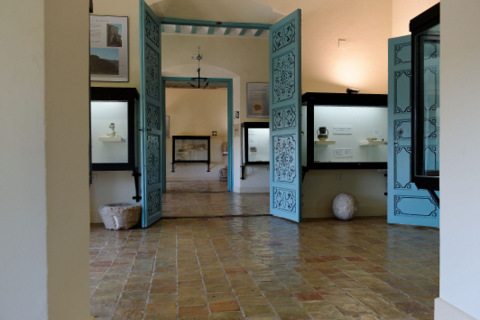 Cehegín’s archaeological museum was inaugurated in 1997, and the buildings which house it remodelled in 2004.
Cehegín’s archaeological museum was inaugurated in 1997, and the buildings which house it remodelled in 2004.
The Museum itself is housed in two separate buildings, although the visitor is unaware of the transition as the salas run seamlessly one from the other.
The Museum is located at the entrance to the Plaza de la Constitucion in the Casa del Concejo and Palacio de los Fajardo, and is close to the major church in Cehegín, the Iglesia of María Magdalena( Click Iglesia María Magdalena) which is also open to public visits at certain times of the week, as well as having good parking for visitors to the town. Its the ideal place to start a visit to Cehegín, enjoy the views, admire the historic buildings in which the Museum is housed and have a glimpse of the history of the town before heading off to visit the other sites of interest ( or a spot of tapas and a coffee.)
Opening hours for the museum:
From Monday to Sunday 10am to 1.30pm
Telephone 968 74 25 25
The Museum.
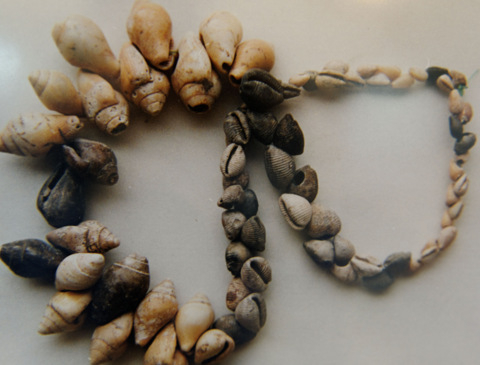 The most important displays of the archaeological museum of Cehegín are currently ordered chronologically in seven rooms, although there are plans for expansion in the future. A series of explanatory boards help the visitor to understand the items on display and place them in context, learning about the societies from which they came and how they were used. The boards are in Spanish, so visitors to Cehegín might like to read the History of the town before visiting the Museum as it helps to put the exhibits a little more into context and understand the different cultures which passed through this town.
The most important displays of the archaeological museum of Cehegín are currently ordered chronologically in seven rooms, although there are plans for expansion in the future. A series of explanatory boards help the visitor to understand the items on display and place them in context, learning about the societies from which they came and how they were used. The boards are in Spanish, so visitors to Cehegín might like to read the History of the town before visiting the Museum as it helps to put the exhibits a little more into context and understand the different cultures which passed through this town.
The visitor enters via the ante-room, where there are various replicas of Roman mosaics and the jade boat.
Going up to the first floor, in the next room (evocatively titled “Desde la noche de los tiempos”, from the night (we would say dawn) of time) there are numerous remains from the Neolithic Age in the area of Cehegín. The most important site of this period is the Peña Rubia, which has been declared a site of UNESCO interest due to the prehistoric paintings which date back 4400 years. Another important site from this era is at the 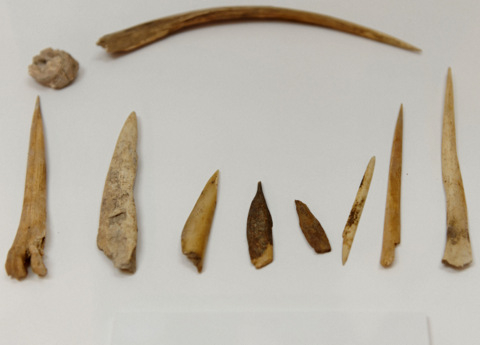 Sierra de la Puerta, which represents a series of caves, and the museum has a good collection of ceramics, flint arrowheads, bone tools and stone implements from this period.
Sierra de la Puerta, which represents a series of caves, and the museum has a good collection of ceramics, flint arrowheads, bone tools and stone implements from this period.
There is also an extensive collection of fossils, added to the displays in 2012.
The displays in the third and fourth rooms contain items from the Bronze Age and the Iron Age, so roughly cover a period beginning around 2000BC up until around 500BC. At this time the Argaric Culture was flourishing in the south-east of Spain, the exhibits here are handmade agricultural tools and ceramic vases and pots. The Argaric Culture had spread across from El Argar in Almería and was a sophisticated culture with good bronzemaking skills, which was predominant in this part of the Iberian Peninsula between 1800 and 1300BC. There are some important remains of this culture within the Region of Murcia, the major site being that of La Bastida in Totana.
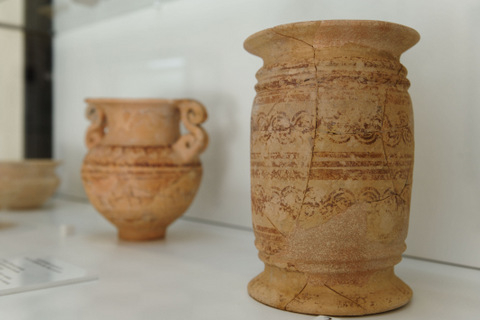 Following on from the Argaric culture came the Iberians, who dominated until the arrival of the Romans in 209BC. The Iberians had a distinct culture and although there is an important Iberian site in nearby Mula, El Cigarralejo, there were a number of Iberian sites in Cehegín, amongst them one which grew into an important settlement during Roman and Visigoth occupations: Begastri.
Following on from the Argaric culture came the Iberians, who dominated until the arrival of the Romans in 209BC. The Iberians had a distinct culture and although there is an important Iberian site in nearby Mula, El Cigarralejo, there were a number of Iberian sites in Cehegín, amongst them one which grew into an important settlement during Roman and Visigoth occupations: Begastri.
Although Begastri is a hugely important site, there was also a religious sanctuary at La Fuente del Recuesto, some kilometres away, and there is extensive evidence of a number of settlements in the surrounding area.
The fifth room houses some of the remains left by the Roman Empire in Cehegín, including inscriptions in Latin which are the most important in the Region of Murcia apart from those found in Cartagena. The Romans occupied this area from 209BC until the 4th century AD, and not only 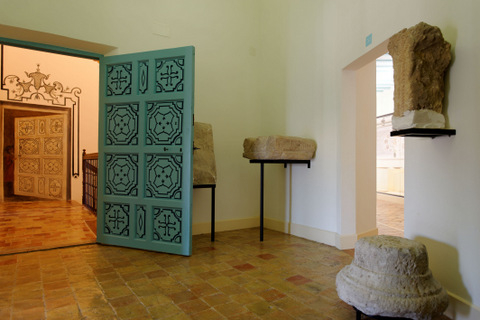 revolutionised agricultural techniques and production to produce export goods such as olive oil, but exploited the natural resources of Cehegín, including esparto grass and marble, some of which was carried to Cartagena to build the City. Amongst the most famous "sons of Cehegín " in Cartagena are the pink marble columns in the Roman Theatre, which are known to have come from the quarries of Cehegín. There are also remarkable sarcophagi imported from Rome, attesting to the spread of Christianity and showing the wealth possessed by some of the inhabitants of this area. Imported goods from Italy were luxuries only the very wealthiest could afford in times when all transportation was carried out by sailing boat or mules.
revolutionised agricultural techniques and production to produce export goods such as olive oil, but exploited the natural resources of Cehegín, including esparto grass and marble, some of which was carried to Cartagena to build the City. Amongst the most famous "sons of Cehegín " in Cartagena are the pink marble columns in the Roman Theatre, which are known to have come from the quarries of Cehegín. There are also remarkable sarcophagi imported from Rome, attesting to the spread of Christianity and showing the wealth possessed by some of the inhabitants of this area. Imported goods from Italy were luxuries only the very wealthiest could afford in times when all transportation was carried out by sailing boat or mules.
The sixth room is devoted to the Visigoths who occupied the Iberian Peninsula from the 6th to the 8th centuries, with Begastri as their religious centre. At this point in time Cehegín as it is today had still not been constructed and Begastri was the focal administrative centre of the district, a substantial fortification with a large population.
By 713 the Moorish invasion of Spain was underway and this whole area agreed a peaceful settlement with the invaders, which lead to a collaborative government with a Visigoth Governer, ( Tudmir) collecting taxes on behalf of the Moorish occupiers, a state of peace which lasted until the early 9th century when inter-tribal rivalries lead to the construction of what is now Murcia capital in 825 and a 400 year occupation by the Moors.
This room contains representative pieces from this era, in which Cehegín assumed its present position and Begastri was abandoned.
Finally, the seventh room displays the findings made in the crypts of the church of Santa María Magdalena at the top of the Plaza: these are an important source of knowledge about the spiritual and religious life of Cehegín in the later Middle Ages.( Don´t miss the shoe!)
Information about the buildings housing the Museum.
La Casa del Concejo
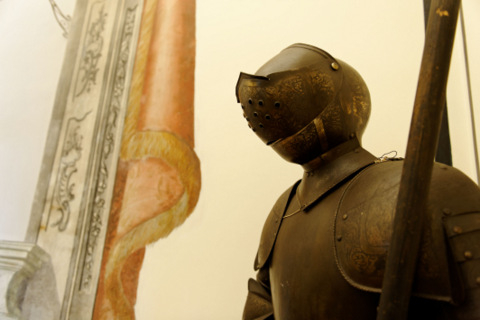 The first building which visitors enter, the Casa del Concejo, was built in approximately 1664, and in terms of its architectural style it belongs to the first period of the Murcian baroque, more sober in tone than the style which became popular throughout the Region in the 18th century.
The first building which visitors enter, the Casa del Concejo, was built in approximately 1664, and in terms of its architectural style it belongs to the first period of the Murcian baroque, more sober in tone than the style which became popular throughout the Region in the 18th century.
It is a two-storey building, and, as its name indicates, it was used as the home of the Concejo, or Town Council, as well as the local prison. As such, it was definitely the most important civic building in the town for centuries.
On the façade there are two blocks with window openings organized in a symmetrical fashion, and in the upper central part are two further openings framed by Tuscan pillars and finished off with triangular pediments. In the lower section there is a majestic portico with three Tuscan pillars, which support two semi-pointed arches: these provide access to the main staircase. On the wall is the city’s coat of arms and, underneath this, a commemorative plaque.
The Palacio de los Fajardo
 The second building of the archaeological museum in Cehegín is the Fajardo Palace.
The second building of the archaeological museum in Cehegín is the Fajardo Palace.
The Fajardos ( Los Marqueses de los Veléz) were one of the most important and influential families within Mediaeval Murcia, and possessed a large number of lands and properties across the region. You´ll see their name again and again in relation to property holdings, churches and fortifications: Mula Castle and Palacio, Alhama de Murcia, Mazarrón castle and church, the Chapel of Los Veléz in Murcia Cathedral....
As is the norm in this type of palace, there are two main storeys and an attic: on the ground floor are the service rooms (kitchen, pantries) and coach-houses, while the noble residence itself occupies the first floor. Much of the dignified appearance of the façade is down to the use of stone. Firstly, the structure is elevated on a small platform of stone from the Sierra de la Puerta, and in addition the main door is framed by marble pilasters. Most of the façade is brickwork, although on the walls there are also flatter areas which function as a decorative element, framed in black. The coat of arms of the Fajardo Roca family is prominently displayed above the main balcony.
Leaving the Museum, it is possible to visit the Church of Santa María Magdalena on some days, enjoy the view and then walk down, with a choice of several directions.
it´s worth bearing in mind that on the last Sunday of each month, this Plaza is home to an artesan market ( see whats on) so an enjoyable morning out can be had combining a visit to museum, church and market in one go.
Where is the Archaeological museum in Cehegín?
Click for map, Archaeological Museum Cehegín
More information about Cehegín
Cehegín lies within the North West area of Murcia. For more daily news, whats on or local information relating to the whole area, select North West from the toolbar beneath the header of every page, or select North west from the map box at the bottom of every page. For more specific information about Cehegín, select the town name Cehegín from the map box at the bottom of every page.
Cartagena
El Carmoli
Islas Menores and Mar de Cristal
La Manga Club
La Manga del Mar Menor
La Puebla
La Torre Golf Resort
La Union
Los Alcazares
Los Belones
Los Nietos
Los Urrutias
Mar Menor Golf Resort
Pilar de la Horadada
Playa Honda / Playa Paraiso
Portman
Roldan and Lo Ferro
San Javier
San Pedro del Pinatar
Santa Rosalia Lake and Life resort
Terrazas de la Torre Golf Resort
Torre Pacheco
Aledo
Alhama de Murcia
Bolnuevo
Camposol
Condado de Alhama
Fuente Alamo
Hacienda del Alamo Golf Resort
Lorca
Mazarron
Puerto de Mazarron
Puerto Lumbreras
Sierra Espuna
Totana
Abaran
Alcantarilla
Archena
Blanca
Corvera
El Valle Golf Resort
Hacienda Riquelme Golf Resort
Lorqui
Molina de Segura
Mosa Trajectum
Murcia City
Peraleja Golf Resort
Ricote
Sucina
Condado de Alhama
El Valle Golf Resort
Hacienda del Alamo Golf Resort
Hacienda Riquelme Golf Resort
Islas Menores and Mar de Cristal
La Manga Club
La Torre Golf Resort
Mar Menor Golf Resort
Mazarron Country Club
Mosa Trajectum
Peraleja Golf Resort
Santa Rosalia Lake and Life resort
Terrazas de la Torre Golf Resort
La Zenia
Lomas de Cabo Roig

CAMPOSOL TODAY Whats OnCartagena SpainCoronavirusCorvera Airport MurciaMurcia Gota Fria 2019Murcia property news generic threadWeekly Bulletin
